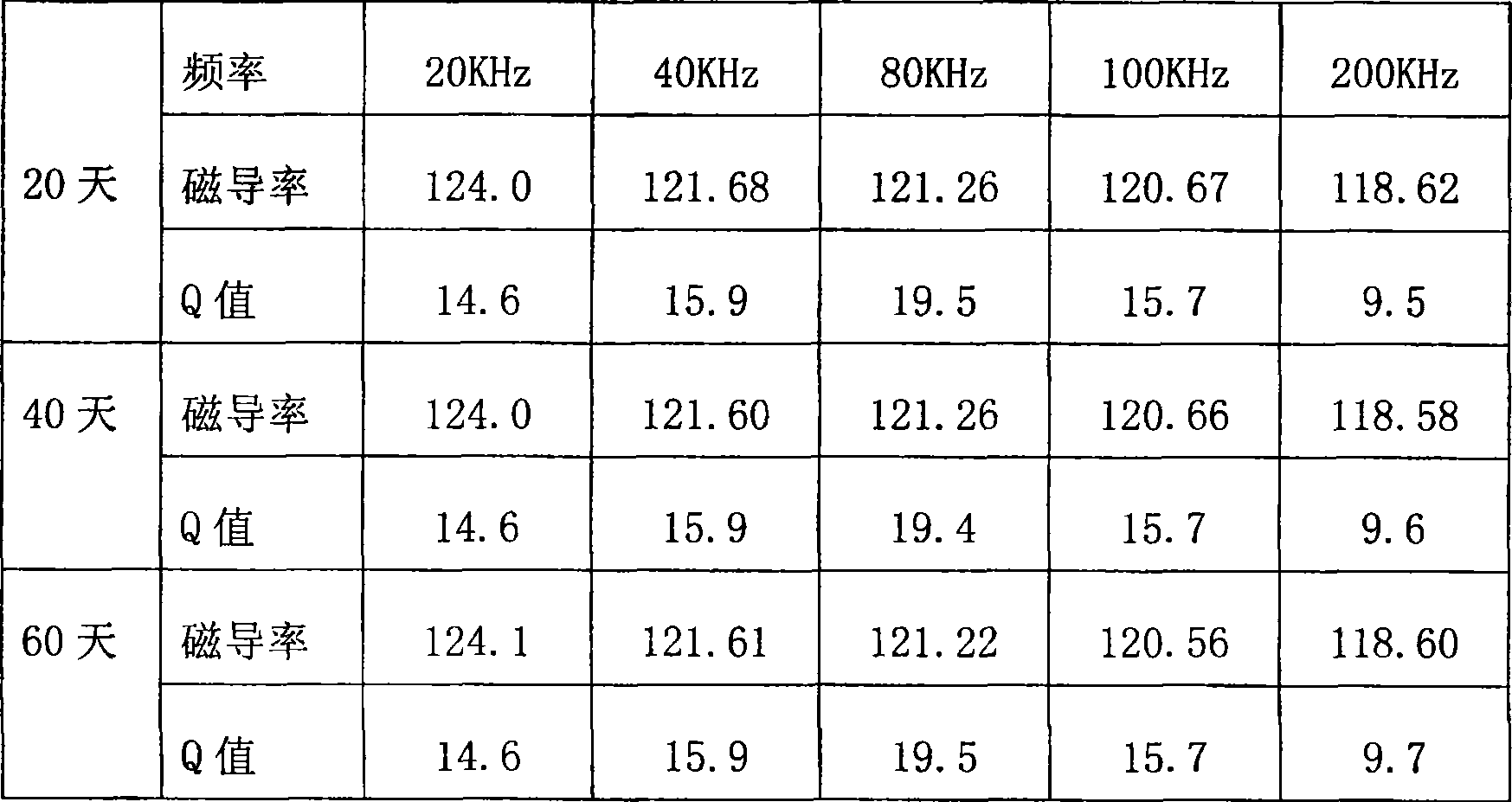Inorganic insulating adhesive for soft magentic metal powder core andits prepn process
An inorganic insulation and metal soft magnetic technology, applied in the field of metal powder alloys, can solve problems such as performance degradation and aging of powder cores
- Summary
- Abstract
- Description
- Claims
- Application Information
AI Technical Summary
Problems solved by technology
Method used
Image
Examples
Embodiment 1
[0022] Example 1: The Fe-Ni-Mo magnetic powder obtained by water atomization method is mixed according to the particle size; wherein the particle size is -150+250 mesh powder 35% wt, -250+325 mesh powder 30% wt, -400 mesh powder 35%, the metal magnetic powder with the above particle size ratio is mixed, and then the surface of the metal magnetic powder is passivated. The passivation treatment solution is a mixed solution of potassium dichromate and potassium phosphate. The concentration of the solution is 8 grams of mixed solid salt of dichromate and phosphate per kilogram of metal powder, and the mixed solution is poured into deionized water heated to 80 ° C. , Stir until completely dissolved, then add the metal magnetic powder into the completely dissolved mixed solution, and heat to 80-100°C, then rinse and dry, so that the surface of the metal magnetic powder reacts and forms an oxide film insulating layer. Prepare inorganic insulating adhesive for metal soft magnetic powder...
Embodiment 2
[0026] Example 2: The Fe-Si-Al powder prepared by the gas atomization method is mixed according to the particle size; wherein the particle size-150+250 mesh powder 30%wt,-250+325 mesh powder 35%wt,-400 mesh powder 35%wt %, the metal magnetic powder with the above particle size ratio is mixed, and then the surface of the metal powder is passivated. The passivation treatment solution is a mixed solution of potassium dichromate and phosphoric acid. The concentration of the solution is 12 grams of potassium dichromate and 0.5 ml of phosphoric acid per kilogram of metal powder. The mixed solution is placed in deionized water heated to 80 ° C and stirred until All dissolved, then add the metal magnetic powder into the completely dissolved mixed solution, and heat to 80-100°C, then rinse and dry, so that the surface of the metal magnetic powder reacts and forms an oxide film insulation layer. Prepare inorganic insulating adhesive for metal soft magnetic powder core according to the f...
Embodiment 3
[0030] Example 3: The Fe3Cu68Mn2Nb2Si12B13 amorphous thin ribbon obtained by the quick quenching method was crystallized under the protection of nitrogen, the treatment temperature was 460°C, and the treatment time was 30 minutes. The crystallized thin strips were pulverized in a ball mushroom machine, and the ball milling time was 24 hours to obtain amorphous and nanocrystalline magnetic powder. After grading the amorphous and nanocrystalline magnetic powder, mix the powder according to the particle size, among which -150+250 mesh powder is 26%wt, -250+325 mesh powder is 34%wt, and -400 mesh powder is 40%. Crystal and nano crystal powder are mixed, and then the surface passivation treatment is carried out on the metal powder. The passivation treatment solution is a mixed solution of potassium dichromate and phosphoric acid. The concentration of the solution is 9 grams of potassium dichromate and 0.6 ml of phosphoric acid per kilogram of metal powder. The mixed solution is pla...
PUM
| Property | Measurement | Unit |
|---|---|---|
| density | aaaaa | aaaaa |
| density | aaaaa | aaaaa |
Abstract
Description
Claims
Application Information
 Login to View More
Login to View More - R&D Engineer
- R&D Manager
- IP Professional
- Industry Leading Data Capabilities
- Powerful AI technology
- Patent DNA Extraction
Browse by: Latest US Patents, China's latest patents, Technical Efficacy Thesaurus, Application Domain, Technology Topic, Popular Technical Reports.
© 2024 PatSnap. All rights reserved.Legal|Privacy policy|Modern Slavery Act Transparency Statement|Sitemap|About US| Contact US: help@patsnap.com








